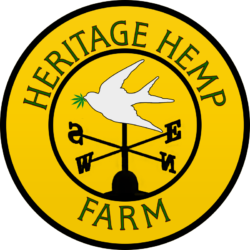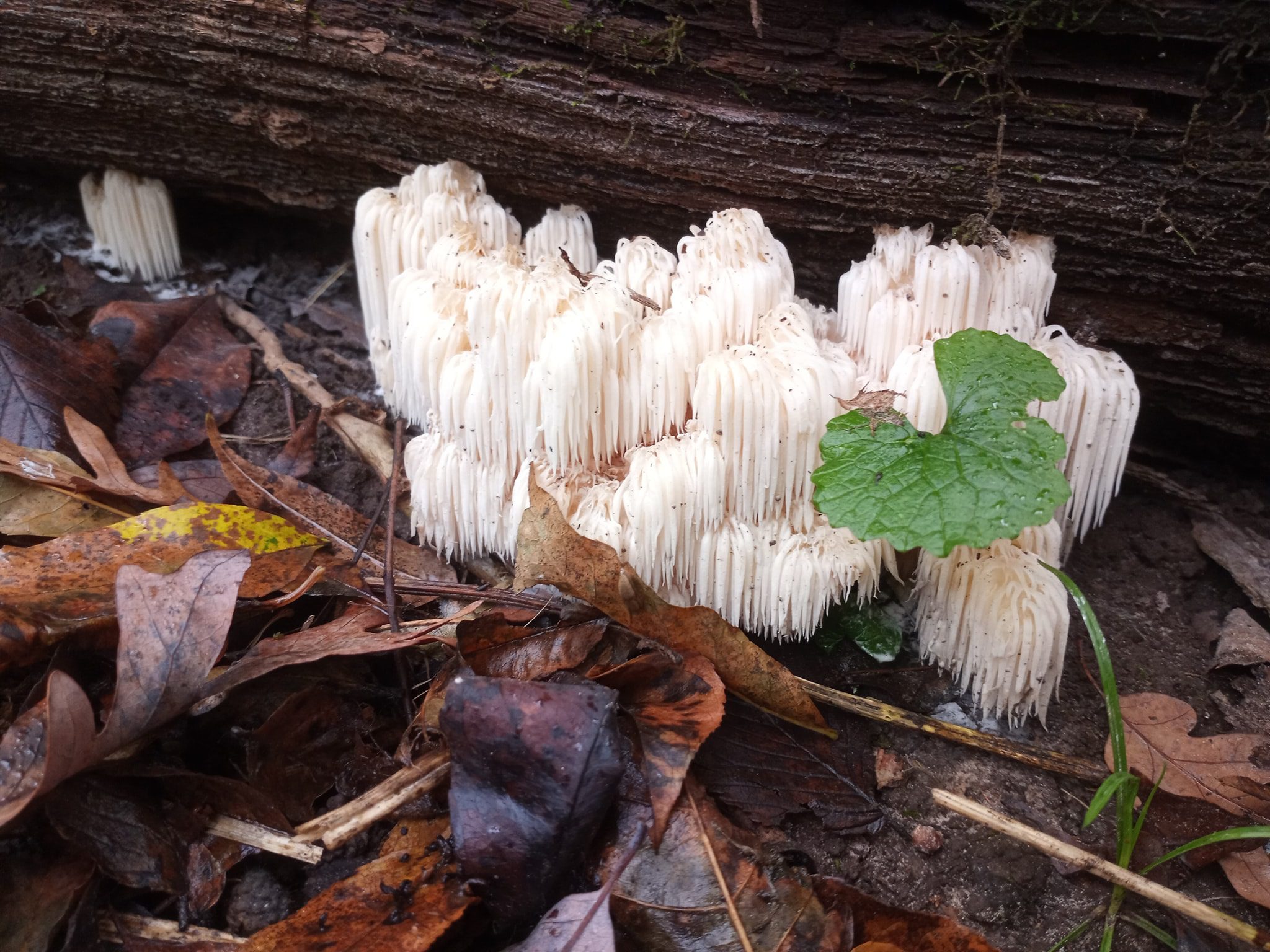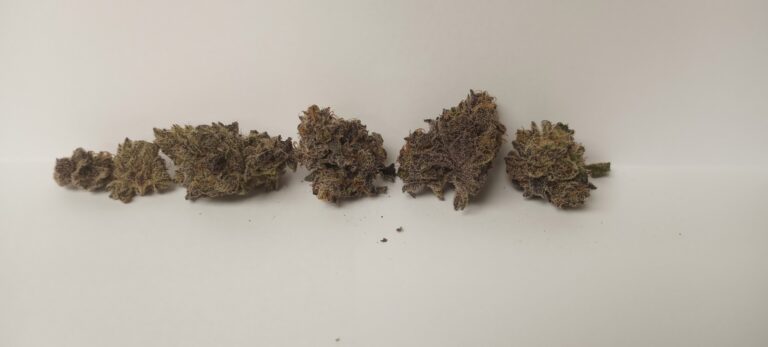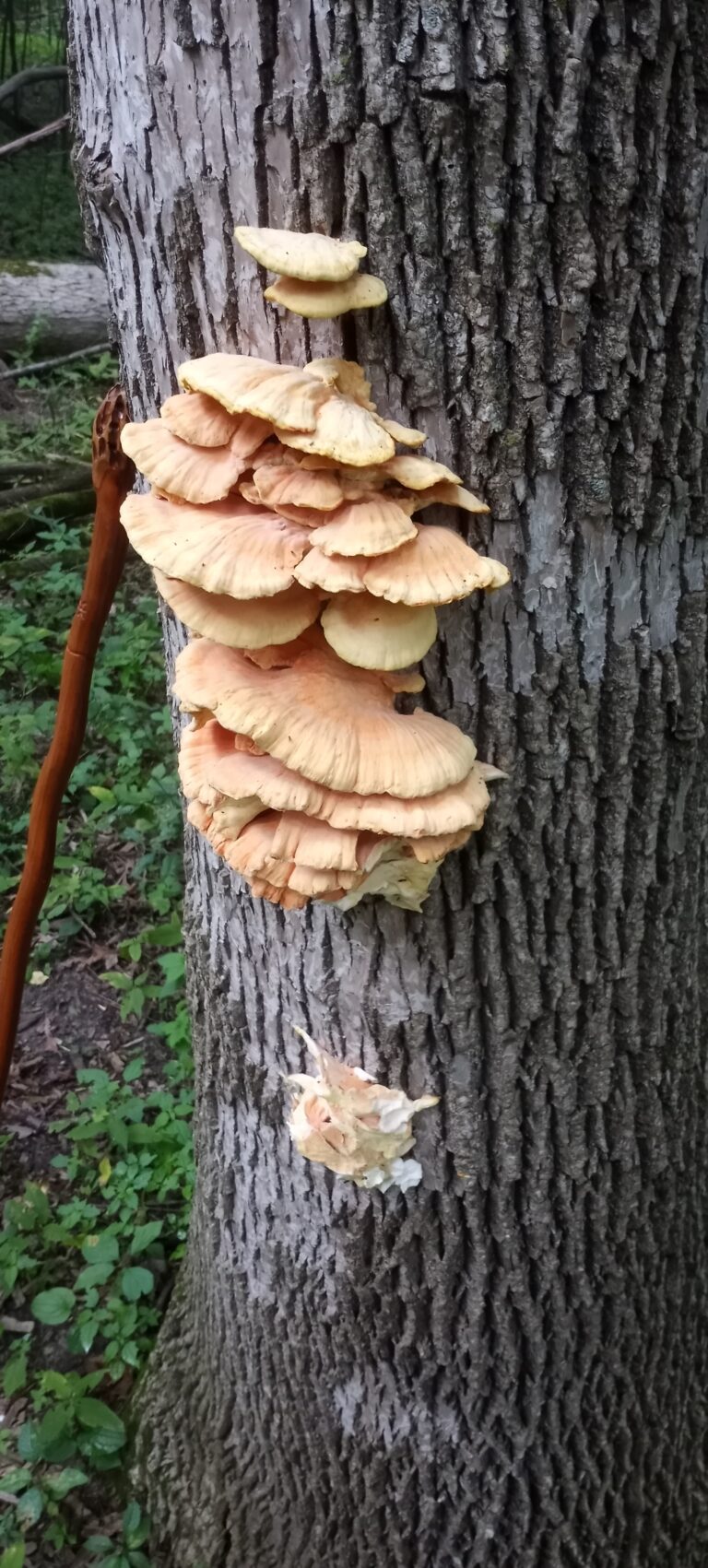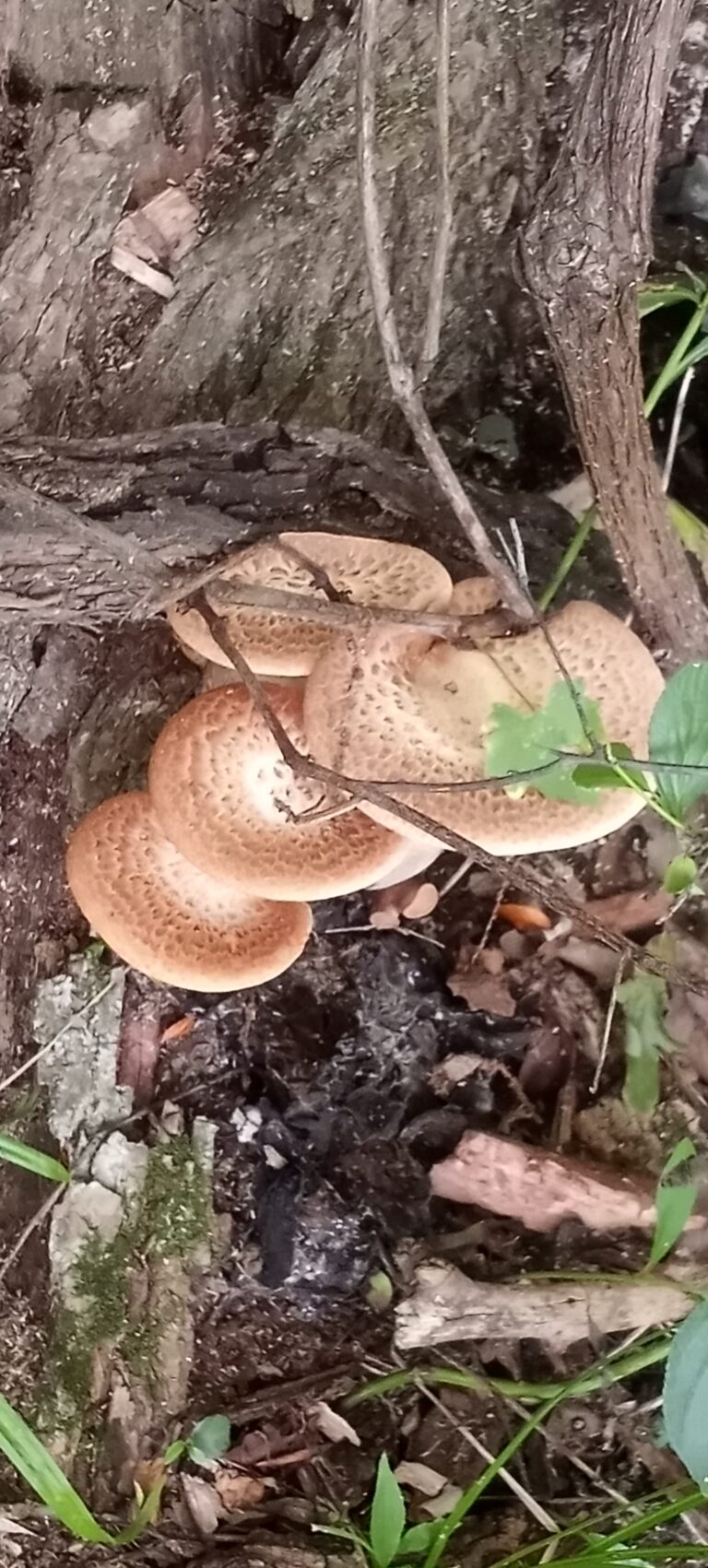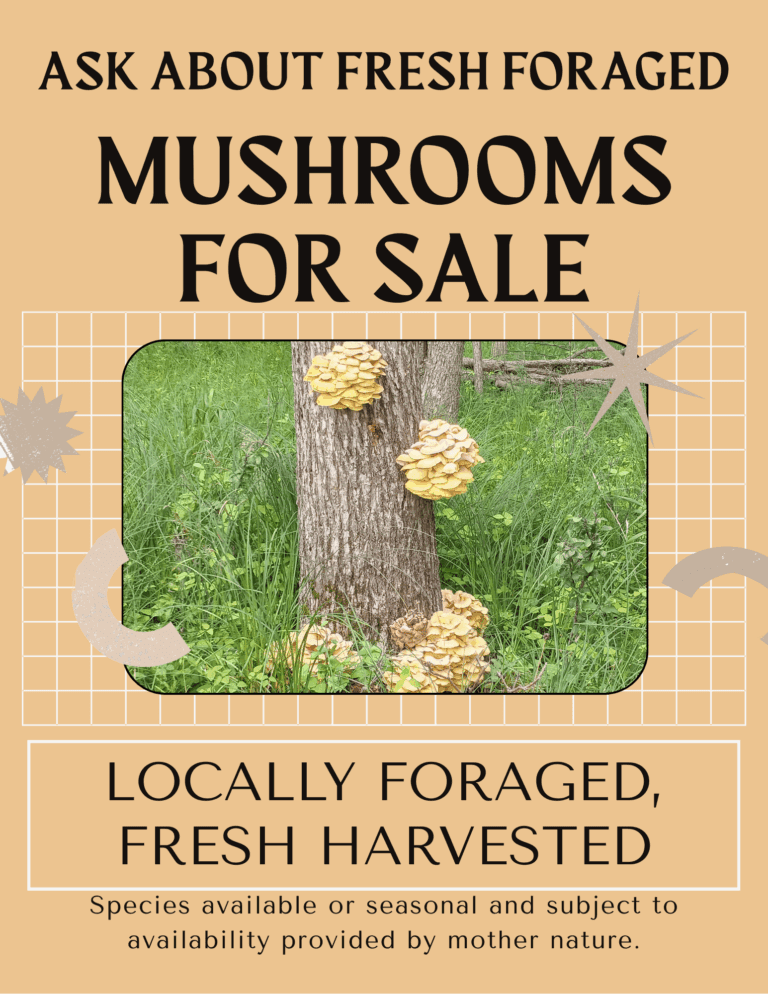Bear’s Head Tooth Mushroom: A Rare Forest Gem
At Heritage Hemp Farm, we love shining a light on the hidden treasures of Wisconsin’s forests. One such rarity is the Bear’s Head Tooth mushroom (Hericium americanum). While we don’t find it in abundance—and you won’t see it regularly in our farm store—it deserves recognition for its striking appearance, culinary value, and ecological role.
What It Looks Like
The Bear’s Head Tooth mushroom is unmistakable once you’ve seen it. Cascading clusters of long, white spines hang like icy stalactites from a central point, giving it a shaggy, bearded appearance—hence its memorable name. As the mushroom ages, its pristine white color shifts to a soft yellow or brown, signaling it has passed peak freshness.
Where It Grows
This mushroom is native to North America and thrives on decaying hardwoods such as oak, beech, and maple. Occasionally, it will even appear on living but weakened trees. Bear’s Head Tooth tends to fruit in late summer through fall, rewarding patient foragers who know where to look. Its scarcity and short fruiting window make it a true woodland delicacy.
Culinary Qualities
When fresh, Bear’s Head Tooth offers a mild, nutty flavor with a tender, meaty texture. Many compare it to crab or lobster, making it a favorite among adventurous chefs. It can be sautéed with butter and garlic, added to pastas, or even formed into mushroom “crab cakes.” However, once it yellows with age, it often develops a bitterness that reduces its culinary appeal.
Nutritional & Wellness Value
Like its relative Lion’s Mane (Hericium erinaceus), Bear’s Head Tooth is part of a genus of mushrooms being studied for potential health benefits. Early research suggests members of this family may support brain and nerve health, though more scientific study is needed. Nutritionally, it provides fiber, antioxidants, and modest protein.
Our store carries infused beverages (cannabis drinks) that include Hericium sp. in them.
Forager’s Tip
Because Bear’s Head Tooth is not often found in great volume, foragers should harvest responsibly. Take only what you’ll use, and leave some behind to continue the mushroom’s life cycle and support the ecosystem. If you’re lucky enough to spot one, enjoy it fresh—this is one mushroom that doesn’t store well. Personally, if I ever stumbled on a big flush of them, I’ll admit: I might just eat them all myself before they’d ever make it to the store!
Why It Matters to Us
Even though Bear’s Head Tooth isn’t a mushroom we find in large enough quantities to sell, its presence in our woodlands is a reminder of the incredible biodiversity around us. For us at Heritage Hemp Farm, spotting one is like receiving a rare gift from nature—beautiful, fleeting, and worth celebrating.
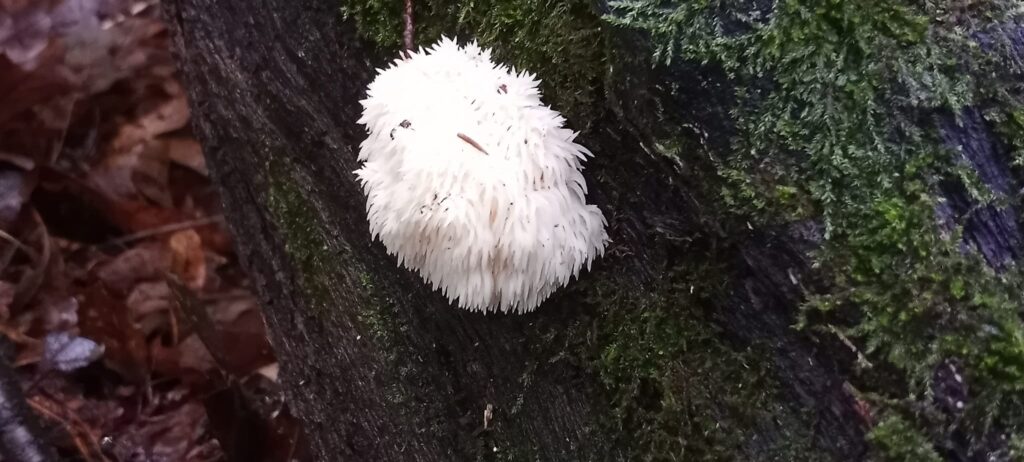

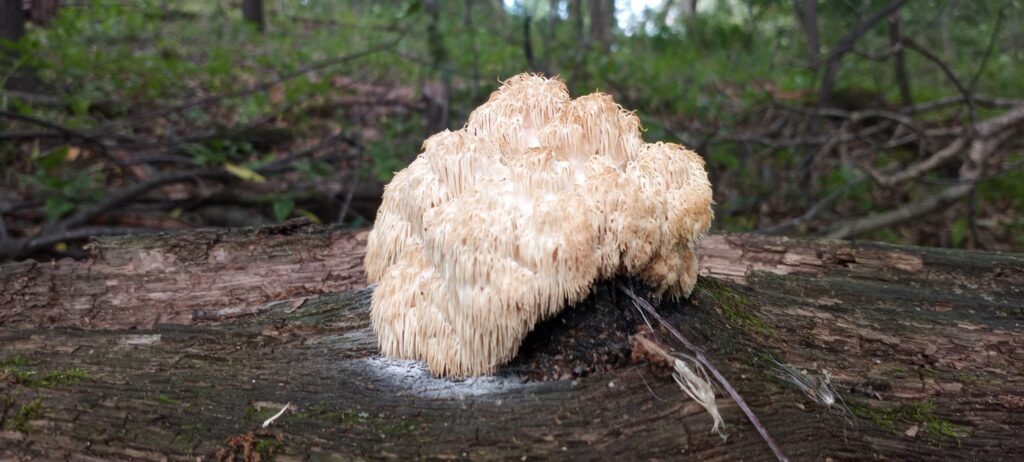
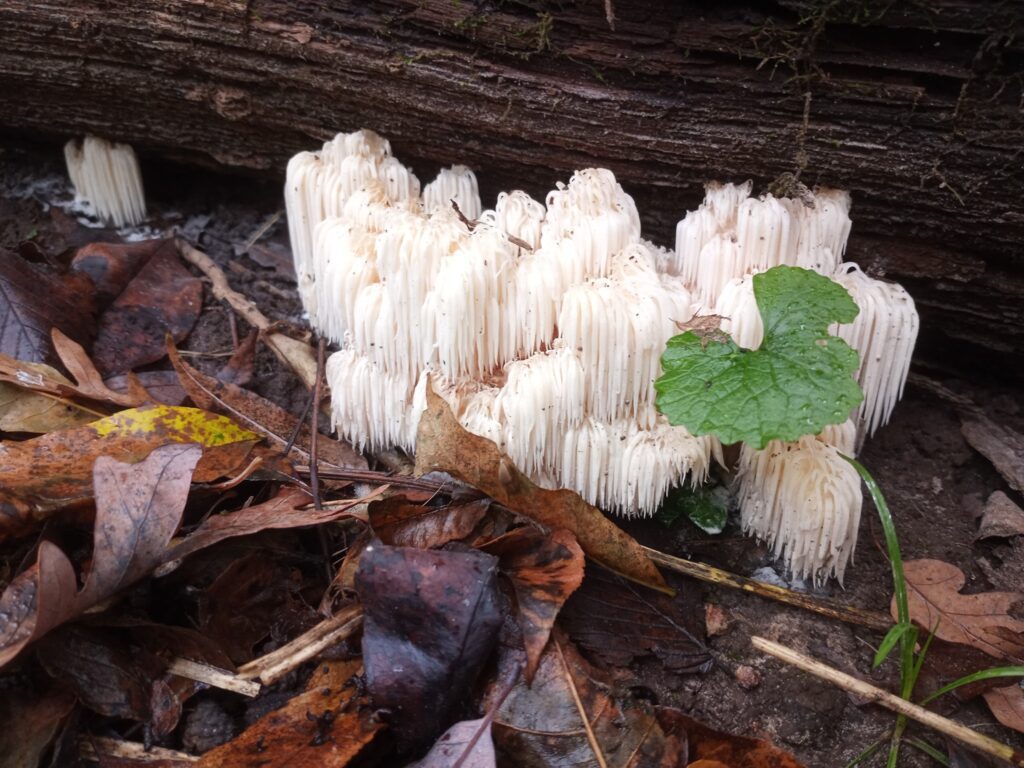
Heritage Hemp Farm Commitment
At Heritage Hemp Farm, I’m a certified forager, deeply committed to both education and conservation. I can help you confidently identify mushrooms—ensuring safety and responsible stewardship. Feel free to reach out if you’d like to explore or learn more!
Whether you’re into cooking, conservation, or curious identification, I’m here to share knowledge, specimens, and guidance. Although I generally forage on private lands, I will surely share my public foraging spots on another project of mine, The Stoner’s Travel Guide to Wisconsin. If you have private lands and want me to walk them with you to identify mushrooms, please do not hesitate to contact me.
And do not forget two other important noteworthy items:
Our annual festival, From The Land is always held on the third weekend in October and we usually have a mushroom vendor at this event.
The coalition to designate the Hen of the Wood as the official Wisconsin State Mushroom asks you to join us in declaring “Hen-of-the-Woods” (Grifola Frondosa) as the official Wisconsin state mushroom by signing the petition today. We plan to use the petition in attracting new sponsors to this legislation and build the database of people who care.
